Last Chance to Catch NYC's Holiday Notalgia Train
We met the voices of the NYC subway on our nostalgia ride this weekend!


Paris has some of the best street art in the world and whilst walking around the city you can get a pretty good introduction into its unique artistic style. Even getting off the plane and in a taxi from Charles De Gaulle, I couldn’t help but notice the highway barricades filled with graffiti and tagging, almost like ribbons of colour streaking past you as you head towards the city.

With the backdrop of stunning historic architecture as a canvas for the artists (which means not a lot room to accommodate big murals and pieces!) the street art is cleverly placed, small, quirky and subtle. Most common is the work of French artist Invader who started placing ‘Space Invaders’ back in 1998 using tile pieces, where he would mosaic the shape of the creature and place it under highways, on streets and corners. His work is all over the world now in 35 cities, from New York to my hometown of Melbourne, Australia.

This cross-global movement of street art is being more and more apparent as I witness through my travels and I attribute it to being popularized by likes of artists such as Shepard Fairey and Banksy. There is something reassuring in knowing that no matter what city you may be in, there is a familiarity you can experience walking around the streets — for some it may be Starbucks, but for me I can’t help but love experiencing the local street art. From the roof of the Pompidou Center you can catch a glimpse of Monsieur Chat atop a nearby building in the direction of Notre Dame. Monsieur Chat first appeared in 2004 in Orleans, France and has now traveled all around the world. Here he is in Sarajevo:
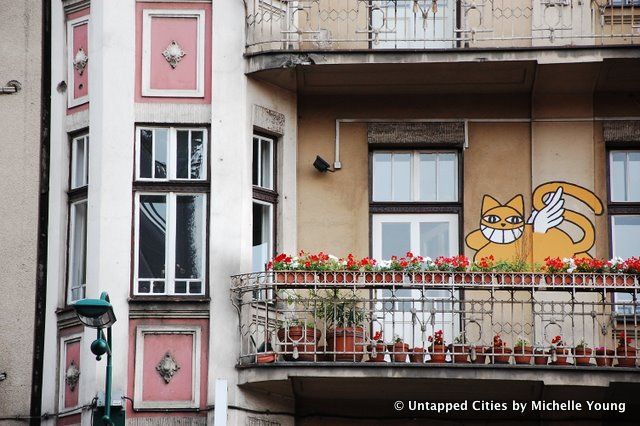
In 2004, Monsieur Chat took over the entire plaza of the Pompidou Center when the documentary “Chats Perchés” (The Case of the Grinning Cat) was shown in the museum.
Stencil art is highly prevalent in the 5th arrondisement along Rue Mouffetard, the first two below by Jana and JS, an Austrian and French duo. You’ll also see “L’Homme en blanc” by Jerome Mesnager on this street.

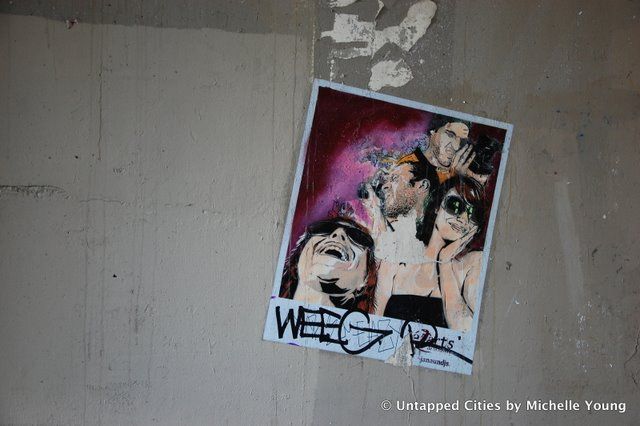
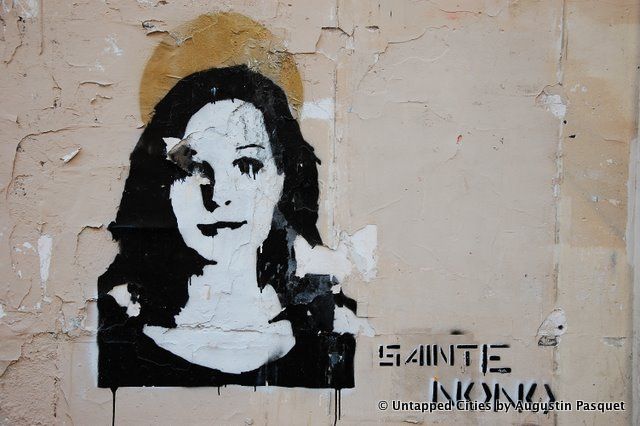

Here’s a unique piece using yarn near the Bibliothèque Francois Mitterand (BnF):

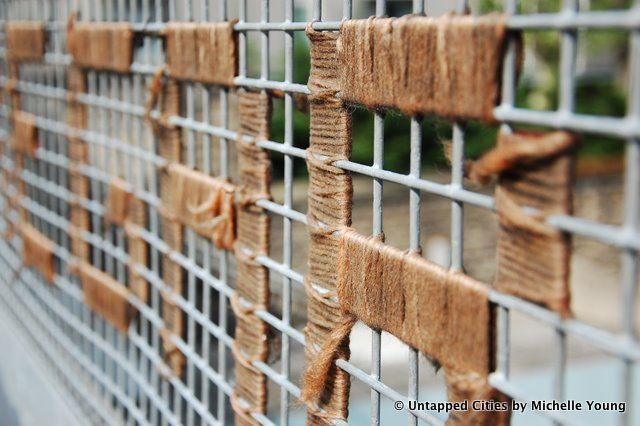
And one of my favorites, a staircase in the Saint Amboise metro stop:

But as you go into the banlieues outside Paris, the graffiti becomes less “artsy”–the tagging has become layered over time, the murals large. Much of the graffiti occurs on public buildings and along public promenades along the Seine. To me, this is where the identity of Paris is still being negotiated. The graffiti is pure expression and there is something urgent in the artwork.
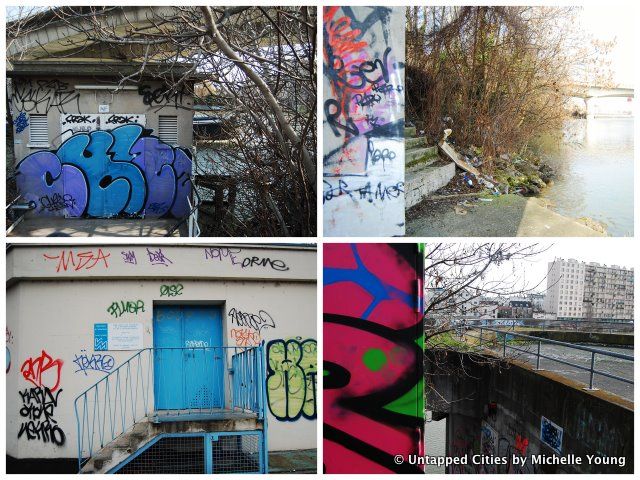
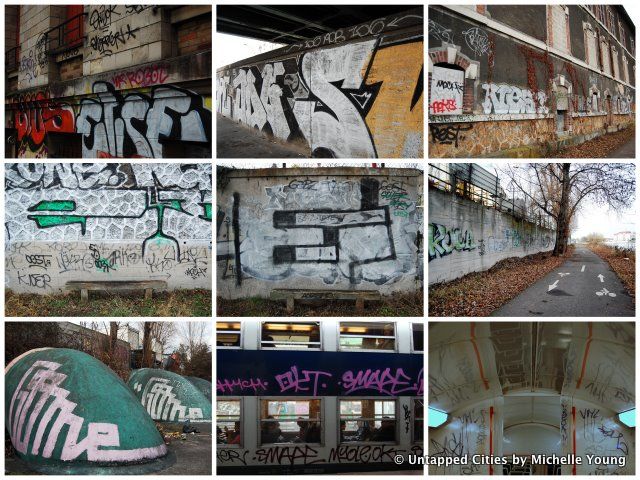
Documentation of graffiti is a life-long pursuit, as the pieces are by nature temporary and subject to removal or overlay. For extensive collections of Paris street art photographs, check out Flickr user vitostreet and parisgraffiti.com.
For more information on the areas outside of Paris, check out Untapped Paris’ coverage of the hidden back-lot facility for the museums of Paris and take a look at the impact of the 1910 flood on the industrial suburbs.
Subscribe to our newsletter